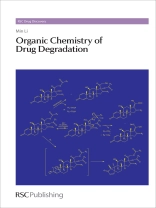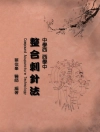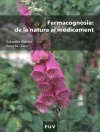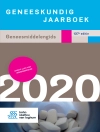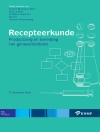The vast majority of drugs are organic molecular entities. A clear understanding of the organic chemistry of drug degradation is essential to maintaining the stability, efficacy, and safety of a drug product throughout its shelf-life. During analytical method development, stability testing, and pharmaceutical manufacturing troubleshooting activities, one of the frequently occurring and usually challenging events would be the identification of drug degradants and understanding of drug degradation mechanisms and pathways. This book is written by a veteran of the pharmaceutical industry who has first-hand experience in drug design and development, drug degradation mechanism studies, analytical development, and manufacturing process troubleshooting and improvement. The author discusses various degradation pathways with an emphasis on the mechanisms of the underlying organic chemistry, which should aid greatly in the efforts of degradant identification, formulation development, analytical development, and manufacturing process improvement. Organic reactions that are significant in drug degradation will first be reviewed and then illustrated by examples of drug degradation reported in the literature. The author brings the book to a close with a final chapter dedicated to the strategy for rapid elucidation of drug degradants with regard to the current regulatory requirements and guidelines. One chapter that should be given special attention is Chapter 3, Oxidative Degradation. Oxidative degradation is one of the most common degradation pathways but perhaps the most complex one. This chapter employs more than sixty drug degradation case studies with in-depth discussion in regard to their unique degradation pathways. With the increasing regulatory requirements on the quality and safety of pharmaceutical products, in particular with regard to drug impurities and degradants, the book will be an invaluable resource for pharmaceutical and analytical scientists who engage in formulation development, analytical development, stability studies, degradant identification, and support of manufacturing process improvement. In addition, it will also be helpful to scientists engaged in drug discovery and development as well as in drug metabolism studies.
İçerik tablosu
Introduction; Hydrolytic Degradation; Oxidative Degradation; Various Types and Mechanisms of Degradation Reactions; Drug-Excipient Interactions and Adduct Formation; Photochemical Degradation; Chemical Degradation of Biological Drugs; Strategies for Elucidation of Degradant Structures and Degradation Pathways; Control of Drug Degradation; Subject index
Yazar hakkında
Dr. Min Li is an Associate Director at Analytical Chemistry in Development and Supply – Supply Analytical Sciences Department of Merck & Co., Inc. He has led technical teams of senior-level scientists (Senior and Principal Scientists) for various analytical and pharmaceutical manufacturing process investigation and troubleshooting, impurity peak identification, study of drug degradation mechanisms, analytical method development, validation, specification setting, and support for new drug filing. He graduated from Fudan University and received his Ph.D. in Organic Chemistry from Johns Hopkins University, followed by a postdoctoral research at University of Illinois at Chicago in medicinal chemistry. Dr. Li was a Principal Scientist at Roche (1995 – 1998), a Scientific Fellow at Merck (1998 – 2005), and a manager at Schering-Plough (2005 – 2010). He was president of Sino-American Pharmaceutical Professionals Association (SAPA) between 2003 and 2004. Dr. Li is the first/primary author of more than 40 publications in a multi-disciplinary arena including organic, medicinal, bioconjugate, and analytical chemistry, as well as mass spectrometry. He has been invited to present in numerous international scientific meetings and conferences.
